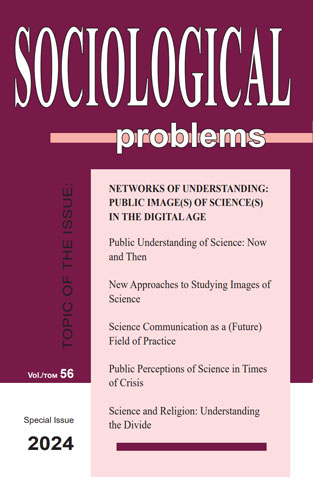Bridging the Divide: Integrating Distributional Semantics, Hermeneutics, and Semiotics for Holistic Textual Analysis in the Digital Age
Bridging the Divide: Integrating Distributional Semantics, Hermeneutics, and Semiotics for Holistic Textual Analysis in the Digital Age
Author(s): Ahmet SuerdemSubject(s): Social Sciences, Sociology, Social Theory, Social Informatics, Sociology of Culture
Published by: Институт по философия и социология при БАН
Keywords: mixed methods in text analysis; semiotics; hermeneutics; distributional semantics; cultural analysis
Summary/Abstract: This paper explores the integration of distributional semantics, hermeneutics, and semiotic theory as a powerful framework for analysing large textual corpora in the digital age. The advent of big data and advanced computational techniques has created new opportunities for bridging quantitative and qualitative approaches to textual analysis. By combining the data-driven insights of distributional semantics with the contextual depth of hermeneutic interpretation, researchers can uncover latent semantic structures while maintaining sensitivity to cultural and historical contexts. The paper argues that this integrated approach aligns well with semiotic theory, particularly Charles Sanders Peirce’s concept of semiosis. Peirce’s triadic model of sign interpretation provides a comprehensive lens for examining texts as dynamic semiotic systems, emphasising the importance of context and interpretation in meaning-making processes. By viewing texts as complex networks of signs interacting within specific contexts, researchers can gain richer, more nuanced insights into how meanings are constructed and reconstructed across diverse cultural landscapes. The integration of these approaches offers several advantages: it allows for the systematic analysis of large-scale textual data, provides a framework for understanding the contextual complexities of meaning, and bridges the gap between computational methods and interpretive analysis. However, it also raises important epistemological and ontological questions, particularly regarding the relationship between semiotic processes and material reality. The paper concludes by highlighting how the discussed theoretical and philosophical considerations can inform a methodological framework that synergises the analytical strengths of distributional semantics, hermeneutics, and semiotics. This potential framework promises a comprehensive approach to textual analysis, adept at unravelling both the macroscopic quantitative patterns found in extensive corpora and the intricate qualitative nuances essential for deep contextual interpretation. Implementing this framework could significantly advance text analysis methodologies across various disciplines such as linguistics, cultural studies, and the social sciences, especially within the rapidly expanding realm of big data.
Journal: Социологически проблеми
- Issue Year: 56/2024
- Issue No: Special
- Page Range: 33-58
- Page Count: 26
- Language: English
- Content File-PDF

